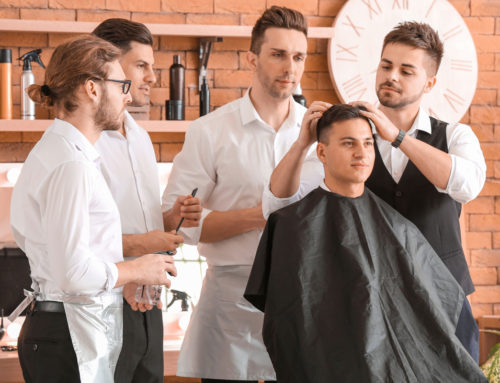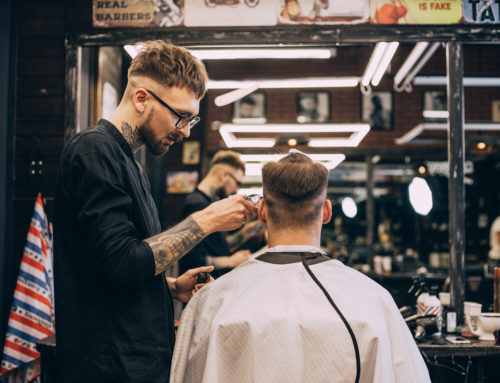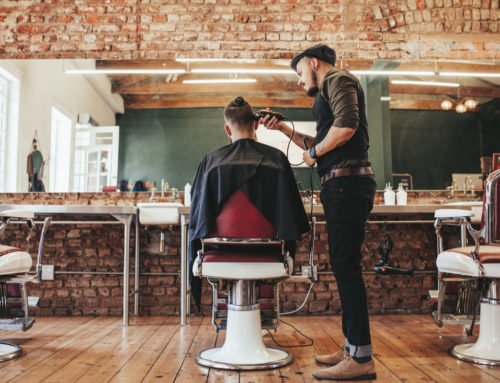Hair damage is a frustrating and common issue many face, whether from dyeing, bleaching, or heat styling. If you’re tired of dealing with dry, brittle, or frizzy hair that just won’t behave, this guide is here to help you understand what’s going wrong and how to fix it. Repairing damaged hair isn’t about quick fixes, it’s about understanding your hair’s unique needs and adopting a consistent, effective routine. With the right knowledge and care, you can restore your hair’s strength, shine, and softness. Let’s dive into expert solutions, daily routines, and professional treatments to transform your damaged hair into healthy, beautiful locks.
Understanding Hair Damage: Signs and Causes
Knowing the signs and causes of hair damage is the first step to effective repair. Damaged hair often looks dry, dull, frizzy, and may break easily. These symptoms usually arise from external factors like chemical treatments (dye and bleach), heat styling tools (straighteners, curling irons), environmental exposure, or neglectful hair care routines.
For example, bleaching strips your hair of natural oils and proteins, weakening its structure. Heat tools, when used excessively without protection, cause moisture loss leading to brittle strands. Even physical damage like over-brushing or harsh towel drying can contribute. Identifying what caused your damage will help tailor the best repair strategies.
Expert Solutions for Specific Types of Hair Damage
1. Damage from Hair Dye
Hair dye contains chemicals that open the hair cuticle to deposit color but can leave hair fragile and porous. To limit further damage, avoid frequent dyeing and use color-safe shampoos and conditioners rich in moisturizing ingredients. Incorporate deep conditioning treatments once a week to replenish lost moisture and proteins. When easing existing damage, focus on repairing the hair’s structure with protein-rich masks and treatments formulated to restore elasticity. Using products with keratin or natural oils helps rebuild the hair shaft. Additionally, reduce heat styling and protect hair from UV rays, which can further deteriorate dyed hair.
2. Damage from Bleaching
Bleaching is one of the harshest treatments your hair can endure. It removes natural pigments and essential proteins, leaving hair fragile and prone to breakage. To limit further damage after bleaching, avoid frequent chemical treatments and always use products designed for color-treated or bleached hair. Incorporate moisturizing shampoos and conditioners that help restore hydration. When easing existing bleach damage, prioritize deep conditioning treatments and hair masks that contain nourishing ingredients like shea butter, argan oil, and keratin. Avoid heat styling tools or always use a strong heat protectant to prevent additional stress. Regular trims help remove split ends and keep hair looking healthier.
3. Damage from Heat Styling Tools
Heat styling tools like flat irons, curling wands, and blow dryers are daily essentials for many, but they can cause significant hair damage if not used properly. Heat strips the hair of moisture, leading to dryness, frizz, and breakage. To limit further damage, always use a heat protectant spray or serum before styling. Keep the heat settings on low to medium and avoid styling the same section multiple times. When repairing heat-damaged hair, focus on rehydrating with deep conditioning treatments and avoid excessive heat exposure until your hair recovers. Using nourishing oils and leave-in conditioners can help restore softness and shine. Consistency is key; regular care over time can reverse much of the damage.
4. Damage from Neglect and Poor Hair care
Sometimes, hair damage isn’t from harsh chemicals or heat but from neglect or improper care. Ignoring your hair’s needs, like skipping regular trims, washing too often, or using the wrong products, can cause your strands to become weak, dry, and prone to breakage. Over-brushing or rough towel drying can lead to physical damage, while buildup from products and oils clogs hair follicles and dulls your hair’s natural shine. To limit further damage, adopt a gentle hair care routine: wash with mild shampoos suited to your hair type, avoid harsh chemicals, and be mindful of how you handle your hair daily. To ease existing damage, incorporate hydrating and restorative treatments like leave-in conditioners, protein masks, and scalp care. Regular trims every 6-8 weeks help maintain hair health by removing split ends before they worsen.
How to Care for Damaged Hair Daily: Routine and Best Practices
Caring for damaged hair every day requires a gentle, consistent routine tailored to restore moisture, strengthen strands, and prevent further harm. The foundation starts with choosing the right shampoo and conditioner. Look for sulfate-free, hydrating formulas enriched with ingredients like keratin, argan oil, and vitamins that specifically target damaged hair repair. These products clean your scalp without stripping natural oils, helping maintain moisture balance.
Deep conditioning treatments play a crucial role in replenishing lost nutrients and rebuilding the hair’s structure. Incorporate a deep conditioning mask at least once a week to nourish dry, brittle strands. Leave-in conditioners provide an extra layer of protection, sealing in moisture and smoothing frizz throughout the day.
Avoid overwashing your hair, as this can strip natural oils and exacerbate dryness. Washing 2-3 times a week with lukewarm water is ideal to preserve your hair’s natural protective barrier. Hot water can weaken hair cuticles, leading to more damage. Protective styling can reduce mechanical damage caused by brushing, heat, and environmental exposure. Avoid tight hairstyles that pull on the hair and opt for loose, low-tension styles. Use wide-tooth combs to detangle gently, especially when hair is wet and vulnerable.
Natural & Home Remedies to Repair and Nourish Hair
Natural oils like coconut oil, argan oil, and essential oils have long been praised for their nourishing properties. Coconut oil penetrates deep into the hair shaft, providing hydration and reducing protein loss. Argan oil is rich in antioxidants and vitamin E, restoring shine and softness while protecting hair from environmental damage. Essential oils like rosemary or lavender can stimulate scalp health and promote hair growth when used correctly.
Diet also plays a vital role in hair repair. Consuming vitamins such as biotin, vitamin E, and omega-3 fatty acids helps strengthen hair from within. Antioxidant-rich foods protect hair follicles from damage caused by free radicals and environmental stressors. Lifestyle adjustments can greatly improve hair health. Reducing the use of heat styling tools, switching to silk or satin pillowcases to minimize friction, and protecting hair from harsh sun exposure all contribute to preventing further damage and supporting recovery.
Professional Treatments for Severe Hair Damage
When hair damage is severe, characterized by extreme brittleness, split ends, and loss of elasticity, it’s crucial to consult a hair specialist or dermatologist. These professionals can assess scalp health and recommend treatments tailored to your hair’s condition, ensuring effective recovery.
Salon treatments like keratin smoothing, Olaplex, and protein treatments have become popular for their ability to repair and strengthen hair bonds. Keratin treatments help restore the hair’s natural protein, reducing frizz and improving manageability. Olaplex is renowned for its bond-building technology that repairs broken disulfide bonds inside the hair shaft, making it ideal for chemically damaged hair. Protein treatments reinforce weakened strands, improving resilience and texture.
In-salon hair masks offer deep nourishment and can be customized to your hair type and damage level. These treatments penetrate deeply to restore moisture, rebuild strength, and revive shine. Regular professional treatments combined with at-home care accelerate healing and enhance long-term hair health.
Preventing Future Hair Damage: Proactive Tips
Prevention is the best strategy for maintaining healthy hair. Consider reducing heat styling or using heat styling alternatives such as air-drying or heatless curls. Always apply a high-quality heat protectant before any heat exposure.
Master proper washing and drying techniques, use lukewarm water instead of hot, avoid harsh shampoos, and pat hair dry with a soft towel instead of rubbing vigorously. Regular trims are essential to remove split ends before they travel up the hair shaft and cause further damage. Equally important is scalp care, as a healthy scalp promotes strong hair growth and prevents issues like dandruff and irritation.
Taking Control of Your Hair Health
Repairing damaged hair takes patience, dedication, and the right knowledge. By understanding your hair’s needs, choosing appropriate products, and incorporating professional treatments when necessary, you can restore strength and vitality to your locks. Remember, consistency is key, regular care and preventive measures will help you maintain healthy, beautiful hair over the long term. Embrace the journey to healthier hair with confidence and a renewed sense of self-care.
Common Questions About Hair Damage Repair
Can damaged hair grow back healthy?
Yes, damaged hair can grow back healthy if you commit to a consistent care routine and avoid further damage. The new growth will reflect your hair care habits and overall health.
How long does it take to repair damaged hair?
Repair time varies based on the extent of damage, hair type, and treatment consistency. Generally, noticeable improvement can take several weeks to months.
What products work best for fixing dry, brittle hair?
Look for products rich in hydrating oils (coconut, argan), proteins (keratin), and nourishing vitamins. Deep conditioners, leave-in treatments, and gentle shampoos designed for damaged hair work best.






Leave A Comment